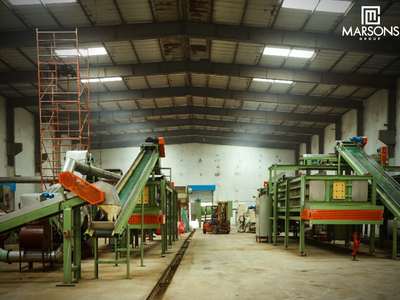What are the primary functions of tobacco processing machines?
The tobacco industry, a global giant, relies on a sophisticated array of machinery to transform raw tobacco leaves into the familiar products that consumers know and use every day. These machines perform a variety of essential functions, enabling the industry to meet high production demands while maintaining product consistency. In this article, we'll delve into the primary functions of tobacco processing machines and explore their critical role in this thriving industry.
1. Leaf Preparation:
The journey of a tobacco leaf begins with leaf preparation. Raw tobacco leaves are sorted, cleaned, and often moistened to make them pliable for the subsequent processes. This stage ensures that only the finest leaves are used in the manufacturing process, enhancing the overall quality of the final product.
2. Cutting and Threshing:
Once prepared, the tobacco leaves undergo cutting and threshing, where machines finely shred or cut the leaves into smaller pieces. This not only aids in blending different tobacco types but also ensures a consistent burn and taste for the end-users. Cutting and threshing machines can vary in complexity, from manual to highly automated.
3. Curing:
Curing is a crucial step in tobacco processing, where the leaves are dried or fermented to develop their unique flavors and aromas. There are several methods of curing, including air curing, flue curing, and sun curing, each requiring specific machinery and conditions. This stage is critical for the development of the characteristic taste associated with various tobacco products.
4. Flavoring and Blending:
Tobacco products often feature distinct flavors, which are achieved through flavoring and blending processes. These machines incorporate various additives, casings, and flavorings to create the desired taste profiles. The art of blending tobacco leaves to achieve consistent flavor and aroma is a skill mastered through both human expertise and machinery.
5. Packaging:
The final product is then packaged using specialized machinery. Depending on the intended end product, this can range from pouches and tins for loose tobacco to the production of cigarettes or cigars. Packaging machines ensure products are sealed and labeled correctly for distribution.
6. Quality Control:
Throughout the entire process, quality control machinery is employed to monitor and maintain product consistency. This includes inspecting the color, texture, and moisture content of the tobacco leaves and the weight and dimensions of the final products. Any deviations from quality standards can be detected and addressed.
7. Automation and Efficiency:
Modern tobacco processing machines are highly automated, significantly reducing the need for manual labor. This not only speeds up production but also reduces the margin of error, ensuring that each product meets specific quality criteria. Automated systems also provide real-time data for process monitoring and adjustment.
8. Environmental Considerations:
In recent years, the tobacco industry has increasingly focused on sustainability and environmental concerns. Manufacturers are exploring greener alternatives for tobacco processing, such as reducing energy consumption and waste production. Some machines are designed with eco-friendly features to align with these goals.
In conclusion, tobacco processing machines are the backbone of the tobacco industry, performing a range of critical functions to create the products that consumers worldwide enjoy. These machines enable consistent quality, high production efficiency, and customization of various tobacco products. As the industry continues to evolve, machinery innovations and sustainable practices will shape the future of tobacco processing, addressing both consumer demands and environmental responsibilities.



Comments
Post a Comment